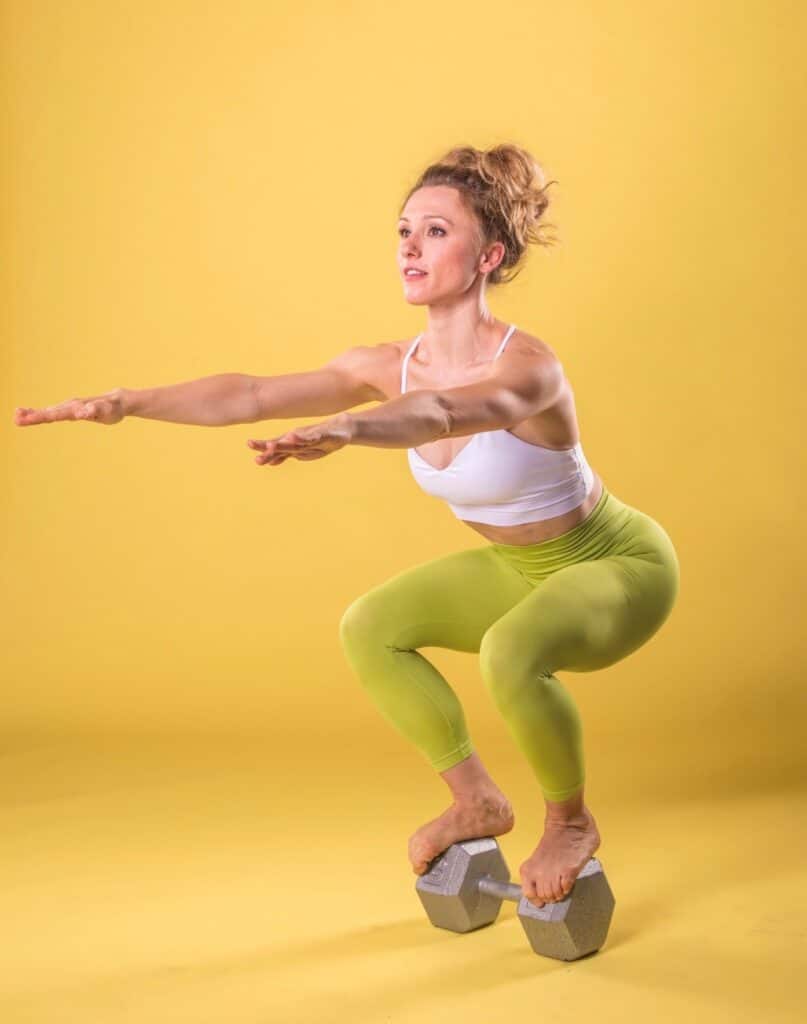By John Robert Morton, Student & Alumni Affairs Liaison, and Adrienne (AJ) Fisher, APU Graduate
The act of breathing in and out is easy and natural, right? But controlled breathing is no longer just for the doctor’s office. Adrienne (AJ) Fisher is an American Public University (APU) alumna and personal trainer who is focused on teaching the latest advancements in breathing therapy to help others achieve better physical fitness.
Related link: How to Get and Stay Motivated to Build a Healthy Lifestyle

Growing Up in Massachusetts
There are a few things that define our graduates, and early mornings and hard work are two of them. Growing up in the cranberry district of Middleborough, Massachusetts, AJ had a hard-working mother who influenced her work ethic from an early age. AJ says, “A high level of grit and consistency are tools that I have been able to rely on.”
Early in life, AJ learned that hard work and persistence pay off. She says it takes three or four years of possessing a high level of tenacity – in areas such as self-improvement, connecting with others, and professional integrity – to see positive outcomes. AJ notes, “Luck is simply where opportunity meets preparation.”
Pursuing Various Paths in the Entertainment World
Growing up, AJ dreamed of the bright lights of New York and Los Angeles. She remained dedicated to that goal while working her way through several other careers.
Navigating through those careers helped AJ to land an off-Broadway job with Cirque du Soleil. Touring with Cirque du Soleil eventually led to AJ’s big break on Broadway, where she was a cast member with “Mamma Mia!” for four years.

Working on Broadway allowed AJ a chance to get back into the swing of school. Life was busy as a Broadway cast member, but AJ knew she wanted to pursue additional education.
Behind the scenes, she focused on earning her bachelor’s degree, which led her to a master’s degree, both in sports & health science with an exercise science concentration. This education has helped prepared her for the opportunity to revolutionize the field of breathing therapy.
She also notes that this period was when “I got into personal training to help clients while I worked in the Los Angeles and New York entertainment scenes.” That’s where AJ’s care and compassion for her clients started to become her focus. AJ says working out and earning the topmost certifications such as CSCS, (NSCA), and nutrition coaching helped her in giving her clients the most holistic possible experience.
Mentoring from the University
“Absolutely life-changing” is how AJ describes her experience with the University. AJ credits mentoring with helping her navigate her academic and professional life, connecting with people a few steps ahead for guidance and motivation.
One particularly special mentor was Dr. Daniel Graetzer, a faculty member with the School of Health Sciences. AJ credits Dr. Graetzer with helping her to get the information she needed to start her research into voluntary breathing and hypoxic training. He was AJ’s professor for her last two classes, where she formed the idea for her breathing research.
Her mentor experience with Dr. Graetzer shaped AJ’s focus and aided her path to implementing her research. Dr. Graetzer was her teacher for her final capstone class and helped AJ immensely with guidance on researching and writing for her final, 200-page thesis. AJ’s thesis is “Potential Multi-pronged Benefits of Implementing Intermittent Hypoxic Training Through a Combination of Slow Breathing, Forced Exhalations and Voluntary Apneas” and can be located in the University’s library.
Related link: 5 Habits to Improve Your Physical and Mental Health
Implementing Her Breathing Therapy Research for Real-World Clients
AJ’s breathing techniques benefit injured clients during their physical therapy; these clients would not otherwise be able to get the amount of exercise they need to meet their health goals. She developed a technique that adds pressured breathing to increase the amount of stress on the internal oblique and transversus abdominis muscles at a low lung volume exhalation.
This controlled breathing is done during exercise to increase the stability of the lumbar spine. She named her technique “Breathography” and uses the business name HypoXiX.
AJ has seen some intriguing results with her clients. One of her clients, for instance, had severe back pain and suffered for years with herniated discs in her lower back.
AJ had this client practice this new method of breathing therapy by blowing into a balloon or a breathalyzer during exercise. She says, “After a while, the client didn’t really love breathing into an instrument while working out. So, I developed a combination of sounds, tempo, and an increasing intensity of exhalations to not only increase the activation of core muscles, but also to temporarily raise the carbon dioxide and lower the oxygen in the lungs while training.”
This method of breathing therapy also aids in changing body composition because it increases the anaerobic work of the body at lower intensities of exercise. Ultimately, this specialized breathing allows a client to burn through more carbohydrates during low-intensity exercise, which is profoundly useful for clients who are not able to do high-intensity workouts due to injury or disease.
Next Steps
AJ intends to eventually apply for a grant to further her research. Her future research will include voluntary breathing in exercise with a focus on body composition change.
She also teaches her breathing therapy techniques to people who will benefit from this type of physical therapy. She currently instructs eight-week online classes for groups of about 30 people.
Her clients have seen an average of 12 pounds of weight loss and drastic improvements in their core strength after their classes. For clients without the ability to tackle physical therapy, this advancement is literally a lifesaver.
Regarding her achievements, AJ notes, “For many years, I had a ‘do it yourself’ mentality, and I was very afraid to ask questions. It was only when I started reaching out to individuals that I realized how much others really want to help! Not only did this expand my understanding of the material I was working on, but it also expanded my network of people to exchange ideas with, which is really how we move the needle in the world of scientific endeavor.”

Comments are closed.